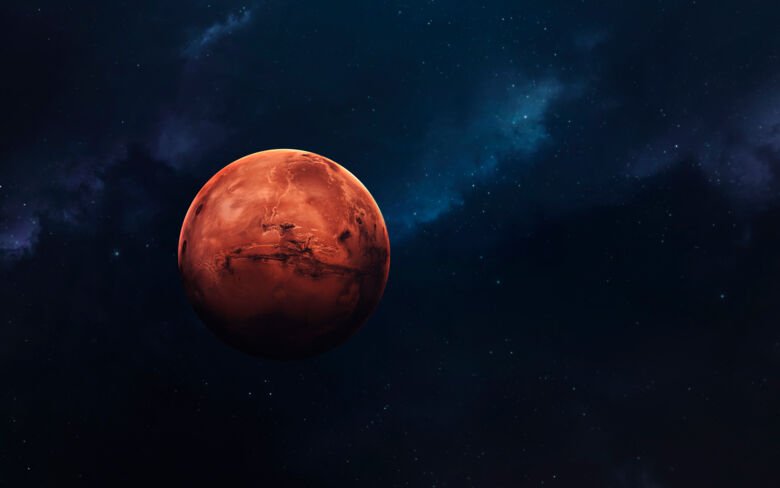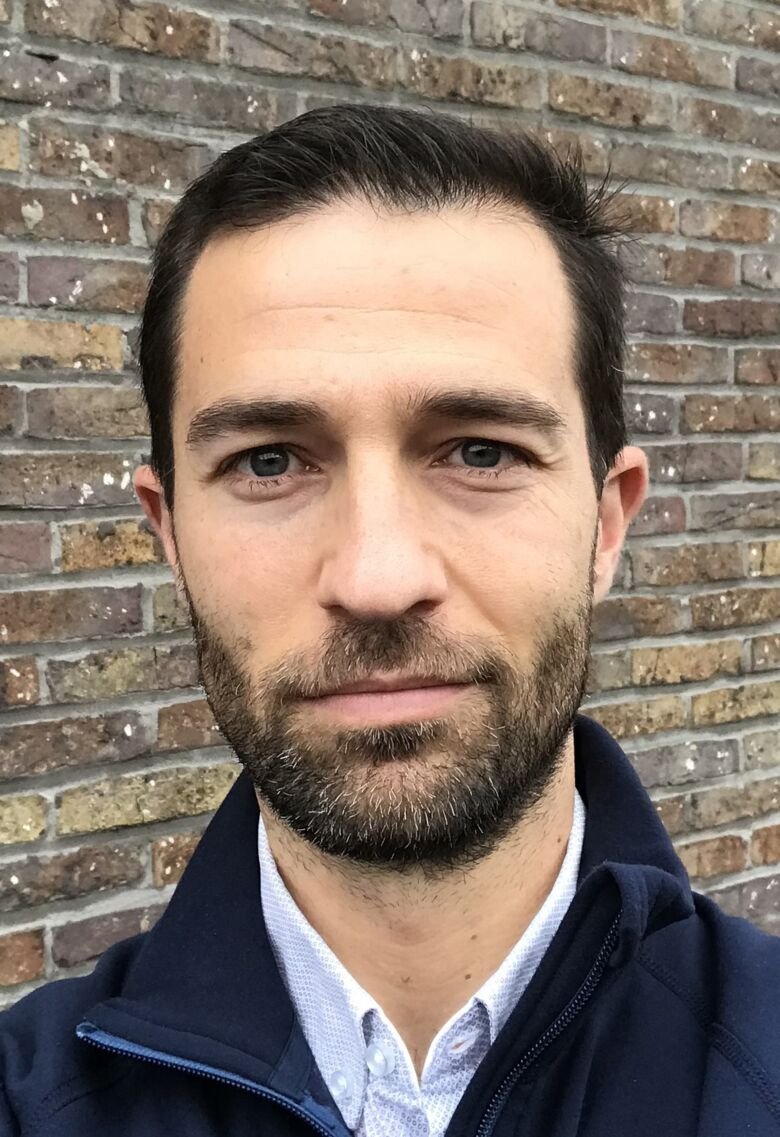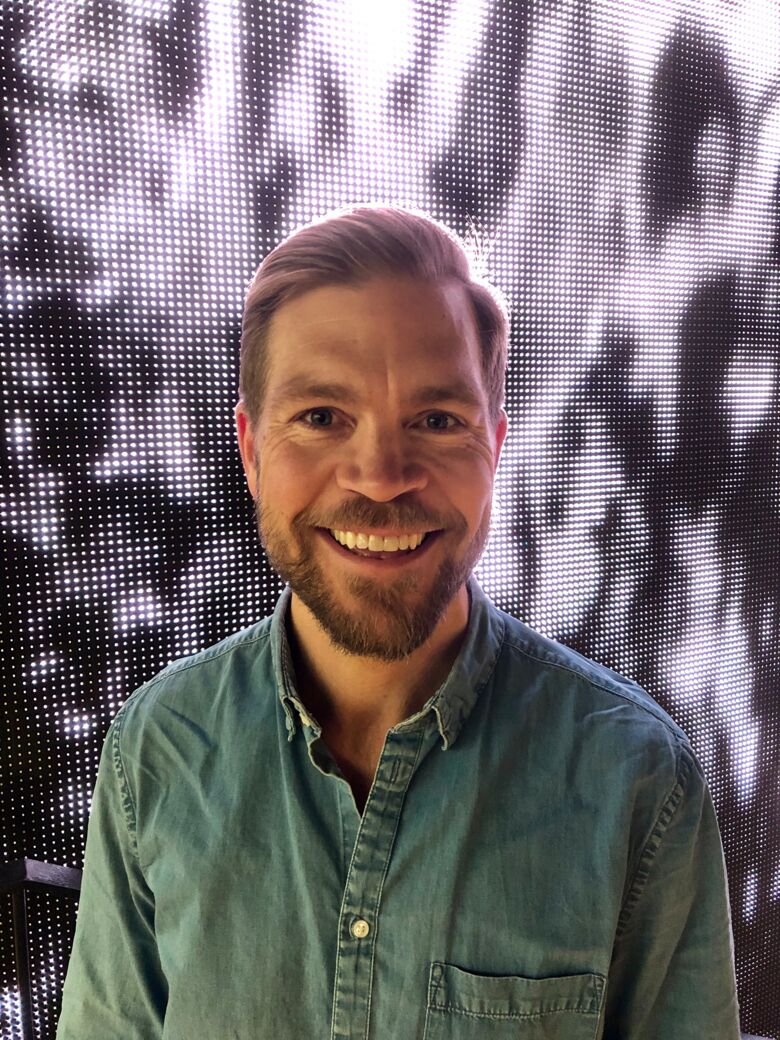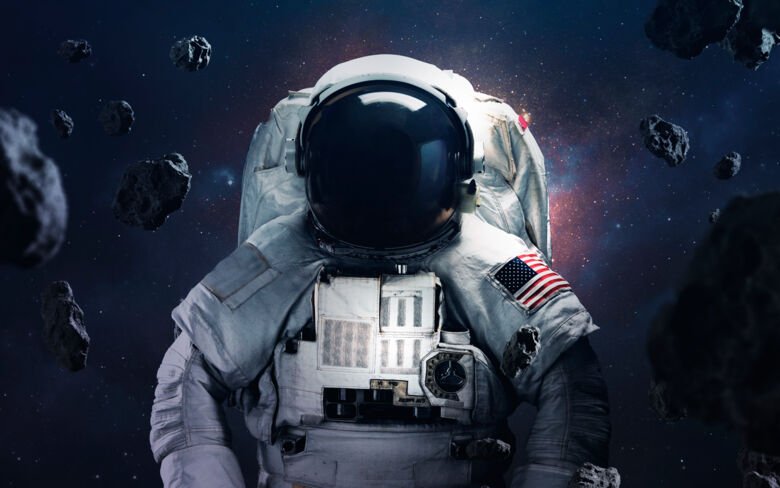Aiming for Mars — curious about space medicine

After half a century in near-Earth orbit, humans are heading further out in space. First to the moon again. Then on to Mars! For this to go well, more research is needed on how space stresses the human body.
Text: Anders Nilsson for the magazine Medicinsk Vetenskap No 4/2023, in translation from Swedish
When Neil Armstrong took man’s first steps on the Moon, his heart was beating 125 beats a minute. We know this because the crew of Apollo 11 wore ECG sensors throughout the trip. From a distance of more than 350,000 kilometres, the control room at NASA’s space centre in Houston was able to monitor the astronauts’ cardiac activity in real time. This is a good illustration of both the possibilities and limitations of space medicine. Everything can be prepared and monitored in detail – but should something serious happen, the Earth and its medical resources are very far away.
Life on Earth has evolved to survive in most diverse environments, from high-altitude deserts to deep-sea trenches, from permafrost to volcanic springs. Only a few environmental factors are common to all terrestrial life. Among them is the fact that it has evolved to work in conjunction with the Earth’s gravity and that it has been well-protected from cosmic radiation.
What happens when, after four billion years of evolution, we change these conditions and expose our biology to things like weightlessness and galactic particle showers? In parallel with space travel, the discipline of space medicine has been developed to answer such questions.
Push our limits even further
The launches of laboratory animals into space in the 1950s, showed that humans would probably not be acutely harmed by weightlessness – and the first manned trips in the 1960s later confirmed this. The Apollo space programme of the late 1960s and early 1970s provided knowledge about how a longer journey affects humans, and how they function on the Moon. Since then, we have travelled no further than space stations a few dozen miles above the Earth’s surface – but our stays have gotten longer and longer. Knowledge has grown about how many months of weightlessness affect us.
Now we’re about to push our limits even further. NASA plans to fly past the Moon in 2025, put astronauts on it a year or so later, and eventually establish a lunar base. After that looms the next target, Mars, possibly during the 2030s. A round-trip voyage to that planet will take more than 500 days. These ambitions place new demands on space medicine research, stoking interest in the field.

One of Karolinska Institutet’s researchers in space medicine is Lisa Westerberg at the Department of Microbiology, Tumour and Cell Biology, who is researching why the immune system is impaired by space travel, and how this could be treated.
“Immunodeficiency is probably not one of the health effects of space travel we could have guessed at in advance. Only recently has it received more attention. About half of all astronauts seem to become more susceptible to infections, both during their stay on the International Space Station (ISS) and afterwards,” she says.
Latent viruses, the kind that many people walk around with in their bodies and which are normally kept in check by the immune system, have also occasionally been reactivated in astronauts and caused illness. This is a common sign of immunodeficiency.
But what is the explanation for space’s negative effect on the immune system?
“No one knows yet, but we have a hypothesis. We believe that it’s because the immune cells find it more difficult to circulate in the body during weightlessness. They’re supposed to move in and out of tissues to do their job efficiently, and gravity seems to play a role in that."
But it’s hard to rule out other explanations for certain, she adds. Being an astronaut on the ISS is an extreme existence in an extreme place. Everything from mental stress to radiation, diet, or the station’s bacterial flora could affect the immune system. To eliminate such sources of error, experiments are conducted back on Earth, on subjects in simulated weightlessness. The research subjects are confined to their beds for weeks, under very strict conditions. Lisa Westerberg’s research group has analysed how the immune system’s T cells are affected by such bed rest and recently published outcomes.
"The experiment lasted for 21 days, and we could clearly see a change in the gene expression of the T cells – that is, which genes are active. But the change was greatest in the middle of the period. Towards the end, it decreased again. One possible interpretation is that T cells have the ability to adapt to weightlessness.”
Why are you looking at T cells in particular?
“We have to start somewhere. It’s a safe assumption that all cell types in the immune system are affected by weightlessness, so there’s still a lot to find out!”
Once the research has sorted out exactly how the immune system deteriorates in space, Lisa Westerberg believes that the path to a good treatment may be short.
“There’s a good chance that the medications we need already exist. There’s already a huge variety of immunological drugs.”
No one knows what happens to the immune system on a long trip to Mars. Lisa Westerberg would like there to be equipment on board for continuous checks.
“We have fantastic instruments here on Earth that can check how your immune system is doing based on a single drop of blood. But they’re too big and complicated to take into space. We need the same functions in a small and simple instrument, and I hope that we can persuade the European Space Agency, ESA, to invest in developing one. It could also do a lot of good in healthcare back on Earth. In large parts of the world, there’s no money for the bulky, expensive instruments used today.”
Muscles and skeleton become weaker
One of the most well-known effects of space travel is the weakening of the muscles and skeleton when the body loses the everyday stimulus that gravity provides. To prevent this, astronauts on the ISS exercise every day, for around two hours a day. This usually works well, but more research is still needed in this area, explains Rodrigo Fernandez Gonzalo, a researcher at Karolinska Institutet’s Department of Laboratory Medicine, who studies muscle deconditioning.

“My research focuses on the mechanisms of this phenomenon: what happens in our genes when muscle mass decreases? This is important knowledge, both for the longer space missions that are now being planned and for the treatment of diseases on Earth. In certain diseases, it is common for patients to lose muscle mass, and this has significant negative consequences. It would be nice if the healthcare system had better tools to counteract this”
In recent decades, it has become clear that skeletal muscles are much more than just organs of movement.
“Muscles have been shown to be important for metabolism and temperature regulation, among other things. They produce thousands of substances that spread throughout the body and influence the function of other organs,” explains Rodrigo Fernandez Gonzalo.
Maintaining muscle mass is therefore not just about maintaining strength, but also about creating optimal conditions for the body to cope with things like radiation stress, inflammation, infections and psychological stress.
Rodrigo Fernandez Gonzalo, who is a member of some of ESA’s expert panels, recalls a discussion about how astronauts’ training time in space could be reduced if exercises were made more effective.
“The conversation took an unexpected turn when a psychologist pointed out that astronauts report that the only moment when they can relax is during exercise time. It’s important to always look at the big picture. Even if we could reduce the exercise time to a quarter of an hour while maintaining the same quality, it probably wouldn’t be a good idea.”
The biggest uncertainty factor when humans move further into space is cosmic radiation, says Rodrigo Fernandez Gonzalo. Both on Earth and in low Earth orbit, the Earth’s magnetic field protects us from radiation, but this will no longer be the case when space travel takes us to the Moon and Mars. Astronauts will then be exposed to both solar particle events and galactic cosmic rays, which are difficult to protect against.
“This is currently the great unknown in space medicine. We know so little about how humans are affected by space radiation. Increased exposure probably leads to an increased risk of cancer, but perhaps also to other damage. There are concerns that long-term exposure could cause anything from an increased risk of cataracts to cognitive effects on the brain. It is a difficult question as to what risks should be considered acceptable, especially in the short term. In the long term, advanced solutions are probably conceivable, such as new drugs that make us more resistant to radiation".
Redistribution of water in their bodies
When gravity no longer pulls the body’s fluids down towards the feet, an imbalance occurs, and more fluid than normal ends up in the torso and head. In the early days of the space race, there was concern about how the upper body would cope with this excess. Would the fluid leak into the chest and breathing apparatus? Would we drown from the inside?
Today we know that during the first few days in space, astronauts develop thin legs and a swollen face from the redistribution of water in their bodies, but that their lungs continue to function perfectly well in weightlessness. The body manages the redistribution by getting rid of about three litres of fluid during the first week, says Lars Karlsson of Karolinska Institutet’s Department of Physiology and Pharmacology, who researches lung function in space.
But indirectly, weightlessness still poses extra challenges for the lungs, he explains.
“Dust and particles in weightlessness do not fall to the floor but remain in the air and enter the lungs. In the long run, that can lead to inflammation and impaired lung function. It would be very unfortunate if astronauts got pneumonia on the way to Mars. Dust is also a major problem when visiting the Moon and Mars,” says Lars Karlsson.
“Both the Moon and Mars are covered in dust that is harmful to us, and it’s hard not to get dust on spacesuits, which then ends up in indoor air. Moon dust is the worst – the particles are sharp, chemically reactive, electrostatic, and stick to everything. The astronauts of the Apollo programme dragged lunar dust into the lander and it led to a slew of problems.”

Lars Karlsson is researching how the measurement of nitric oxide, NO, can be used to diagnose airway inflammation in astronauts. It would be a good way to use a simple instrument to detect illness in astronauts at an early stage, so that treatment can be initiated.
“We always exhale a little NO, and the levels rise with ongoing inflammation. This is already being used in healthcare around the world, including in asthma diagnostics.
To determine normal NO levels in space, Lars Karlsson’s research team has conducted experiments on astronauts on the ISS.
“One important factor is air pressure. On a lunar or Mars base, we’ll want to have lower pressures than on Earth. This will affect the level of NO in the exhaled air. That’s why we’ve conducted low-pressure tests on astronauts in an airlock on the ISS that’s used for spacewalks.”
Another aspect of Lars Karlsson’s research concerns blood composition and blood pressure. After a period of weightlessness, when the body is re-exposed to gravity, its blood pressure regulation is impaired. This leads to dizziness and susceptibility to fainting.
“The effect wears off after a few days, but it’s still a problem. When a crew arrives on the Moon or Mars, it needs to be able to work right away. It’s also a safety issue during landings back on Earth.”
Artificial gravity in a centrifuge
Daily exposure to artificial gravity in a centrifuge could be a way to prevent the problem – and Lars Karlsson is now researching that possibility.
“My focus is on blood pressure regulation, but centrifugation could benefit the body in several ways, for example by reducing the excess fluid in the head. Astronauts on the ISS get elevated fluid pressure in the brain to the extent that many suffer from vision changes. However, centrifuges face technical challenges in space which is why we haven’t tried to use them there so far.”
Doctors on expeditions to Antarctica, have sometimes been forced to remove their own appendix or treat their own breast cancer. In comparison, space travel seems to have been spared such medical incidents. Of course, it is still dangerous; a number of astronauts have died in accidents. Yet thus far, there has been no need for too much qualified medical care. The one exception was a blood clot that was discovered and treated on the ISS. One reason why the astronauts have been so healthy may be that their risk of disease is carefully assessed when they are selected.
Should someone still become seriously ill, the ISS is much closer to civilization than Antarctica in winter, Karlsson points out. A sick astronaut can be rebooked for an earlier return flight or, if the situation is very urgent, even evacuated within a few hours. The same options don’t exist on a multi-week lunar mission – let alone a more than year-long mission to Mars.

Despite the risks, Lars Karlsson would like to travel into space. In fact, he twice applied when ESA was looking for astronauts, and both times he made it to the first round of tests in Hamburg.
“That’s as far as I got. But I’m glad that Sweden got a new astronaut in Marcus Wandt. He seems like a great guy.”
And the next time ESA is hiring astronauts, it looks like Lars Karlsson might pass up the chance to apply.
“We have kids now. We’d actually already had them when I applied the second time, and things got a bit tense at home. My partner was relieved when I didn’t make it to the next round.”
Lisa Westerberg does not share Lars Karlsson’s longing for space at all.
“I'm very interested in space, but I think I’ll be most useful staying on Earth and researching it from afar,” she says. I’ve tried the waterbeds we’ve used to simulate weightlessness, and that was enough for me.”
Rodrigo Fernandez Gonzalo draws his line at the Moon.
“To Mars… No, I wouldn’t want that. We’re not in control when we travel so far. But getting up to the ISS would really be a dream! Space fascinates almost everyone. Say ‘space’ or ‘astronaut’, and you’ll instantly have a child’s attention. It’s a privilege to be able to devote my research to such a subject.”
Three spacey experiments on Earth
Bed rest/dry immersion
Weightlessness is simulated by having subjects lie in bed around the clock, either on an angle with their heads downwards or in a special waterbed that encloses everything except their heads. Lasts for up to 60 days, and the protocol is strict – subjects take care of everything lying down, from their personal hygiene to going to the toilet. Researchers are applying for experimental time at ESA’s two bed rest facilities in Slovenia and France.
Centrifuge
With a fast centrifuge, test subjects can be exposed to the high g-forces astronauts experience during a rocket launch. However, the centrifuge can also rotate slowly to simulate normal or weak gravity.
Isolation
The group dynamics and mental health of isolated crews of people have been studied in isolation experiments of various lengths. One of the most spectacular examples is the Biosphere 2 facility in Arizona, USA, where eight people were locked up for two years in the 1990s.
